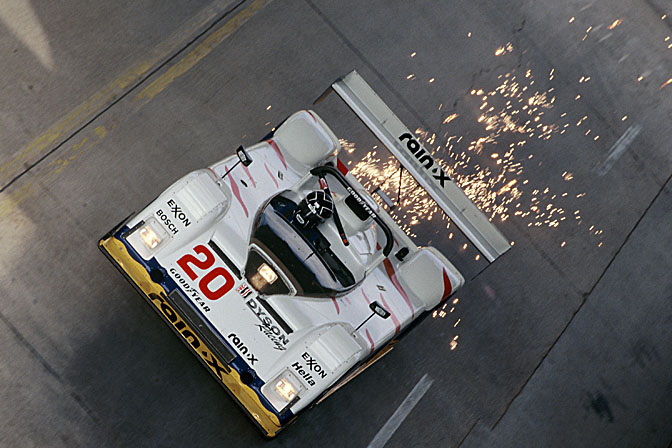

1994 saw the return of sanity to sportscar racing around the globe after the excesses of the final season of Group C and IMSA GTP. We all loved the Eagles, Nissans, Peugeots and Toyotas but their costs were not sustainable for the factories and their performance and budget levels had driven out the privateers, even Rob Dyson.
In Europe the BPR Challenge would lead the way, creating the platform to enable Le Mans to maintain its place as the world's greatest race. We have looked at how this evolved into the FIA GT Championship that exists in some form today.
Across the Atlantic IMSA created the WSC class aimed at privateers and their budgets. The rules were dreamt up by John Bishop, who had originally owned IMSA but was retained to oversee its recovery from the precipice. His name should be added to roll of honour of those who brought sportscar racing out of the dark ages, as listed in the first part of this article.
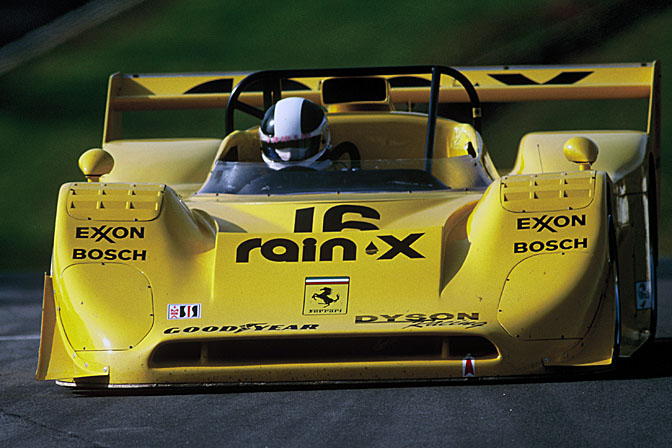
Dyson Racing were back. As the cars were open topped and Porsche engines were effectively outlawed (no turbos please), so it would be with a completely new package.
For the first season of WSC the majority of cars were based on ex-IMSA Lights such as Kudzu, Tiga and Spice chassis with their roof removed. Not inspiring but their you go. The engines would be V8s from Ford, Chevrolet and Oldsmobile. Throw in V6 Buicks and Mazda rotaries and you had cost effective options.
Dyson Racing opted to stick a 348 Ferrari V8 into their new car. Marching to a different drum beat had worked in the past.
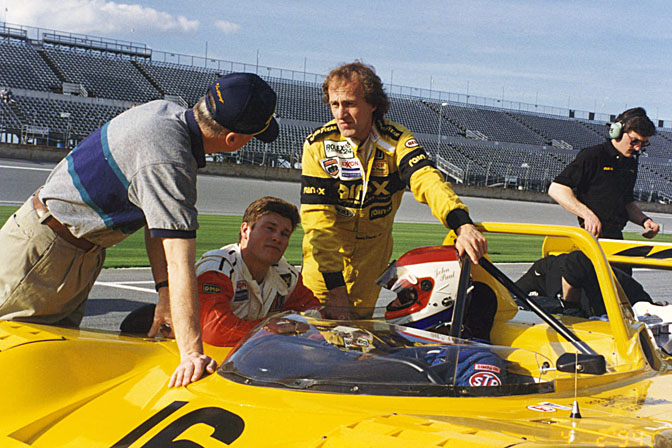
This time it did not work………….Rob Dyson clarifies the project, "In 1993, we bought a Spice and adapted the Ferrari 348 engine to it. I called Bob Akin again and said, "Bob, I've got a Ferrari engine I've got to trick up to run in this Spice." He replied, "Well, you have to see Ted Wenz." So we went to Wenz and he and Peter Marcovicci did a phenomenal job of rebuilding the engines, they were great engines. But the Spice was a disaster from the word go. It was the worst car, no, it was the second worse sports car I've driven. The worst was the Firebird. Everything was a disaster. You couldn't make it work. The steering was a disaster. But the fans loved it. It had a great sound to it. It was loud and throaty and it wasn't like the Ferrari 333SP. And then all of a sudden, everyone started showing up with the Oldsmobile Aurora race engines in their Spice cars. One man's "street derived" is another man's "all race" engine. We were clearly outclassed so we had to look for alternatives.
When I asked James Weaver what was the worst car he ever drove for Dyson, he said the Spice would be leader except for the engine noise, "it felt like a million Dollars, the sound should be compulsory for all races."
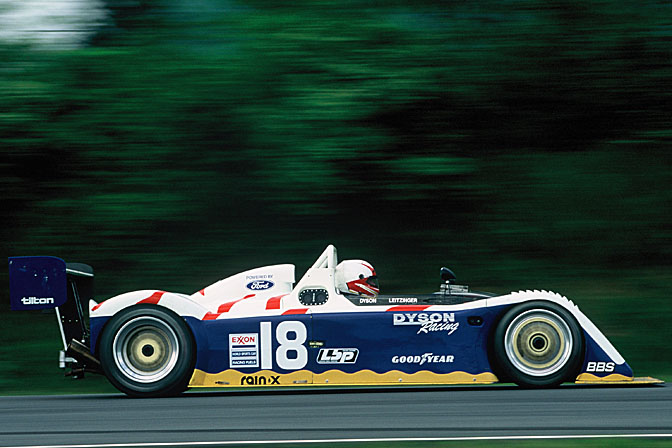
Of course the notion of any meaningful form of cost control is anathema to motorsports whatever pious comments people make to the media. Look at Formula One, the ex FIA President was caught in a sado-masochistic orgy that was plastered all over the tabloids, he influenced the outcome of Championships and generally upset the Grand Prix community. It was only when he proposed spending caps with full access to the teams' books that they rebelled and forced him to resign. The thought that profligacy in motorsports should be stopped is what did for dear, dear Max. In reflection, he was mostly right about the issue, as we shall see in 2010, when I predict that not all the teams that enter the F1 season will finish it.
Back in 1994 the same thing happened in IMSA's WSC. The initial plan was for budgets for the cars to be in the $250,000 level, then Ferrari arrived with the 333SP. It looked and sounded like a million Dollars, it also cost that too. And once Pandora's Box was opened the low tech and cost solutions did not cut mustard.
So Dyson Racing, never prone to profligacy, cast around for the solution. They found it in the shadow of The Brickyard. Bob Riley and Mark Scott put together their Riley & Scott Mark lll, a relatively low cost chassis with what turned out the best aerodynamic package in WSC. Dyson Racing added a Ford V8 to create one of the most iconic sportscars ever seen in North America.
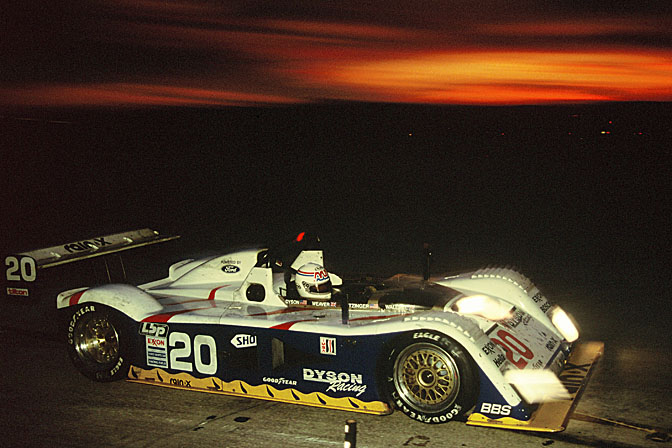
Once again Rob Dyson, "We ran the Riley and Scotts for seven years. We have not run any other race car as long as we have those things. We had one chassis that had over 53,000 racing miles on it, including two Daytona 24 Hour wins on it. The Riley was the most successful car we ran. We ran it the longest and won a bunch of championships with it. It was a magnificent car to drive: beautifully balanced, very stout, very forgiving, and an easy car to drive fast."
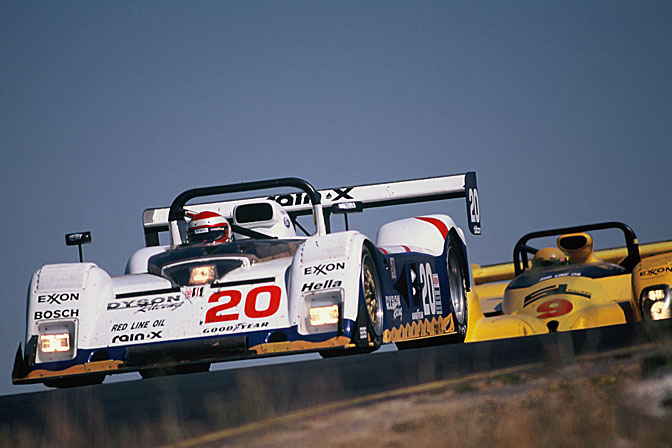
For seven season the Dyson Riley & Scott MKlll Fords won pretty much whenever and wherever they raced. The cars were very popular with the drivers as well.
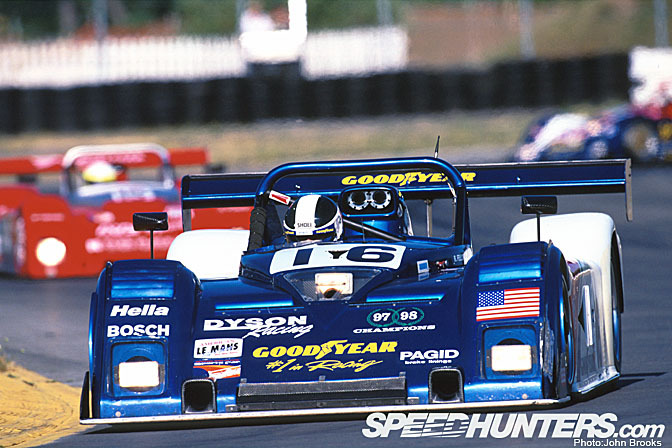
James Weaver told me that climbing into the car was "like putting on a pair of trousers, it was an absolutley great car, great brakes, the result of lots of work with Pagid."
Above all he recalled a qualifying race at Watkins Glen in 1999, an 10 lap sprint in what was laughingly called the CanAm Championship. The start was delayed and eventually the race got unerway in almost pitch black conditions, and it was flat out in the dark all the way, "complete and utter madness" were his very words. I also asked Butch Leitzinger about that evening, he did not qualify the other car so went out trackside to spectate. The first lap he heard James absolutely on it, flat all the way up the hill, others were not so stout hearted. Pole for Weaver.
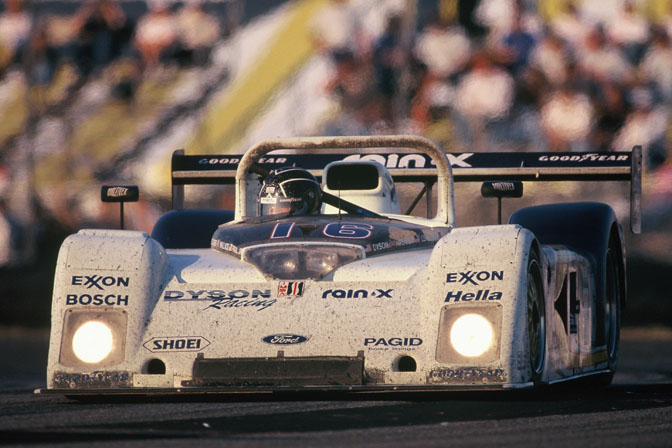
From 1995 Butch had joined the team and soon was winning races.
In fact Butch was one of the crew that scored the Dyson racing's first classic race win, the 1997 Rolex 24 Hours. The rules were pretty lax back then so SEVEN drivers ascended the top step of the podium. Somehow Butch was joined by Rob Dyson, James Weaver, Andy Wallace, Elliot Forbes-Robinson, John Paul jnr. and John Schneider. Butch's final stint had been a nerve wracking affair as Fermin Velez in the Ferrari 333SP was gaining at around 5 seconds a lap due to the Riley's V8 Ford being very sick. But despite the engine burning oil and belching steam Leitzinger kept it going to the flag and victory.
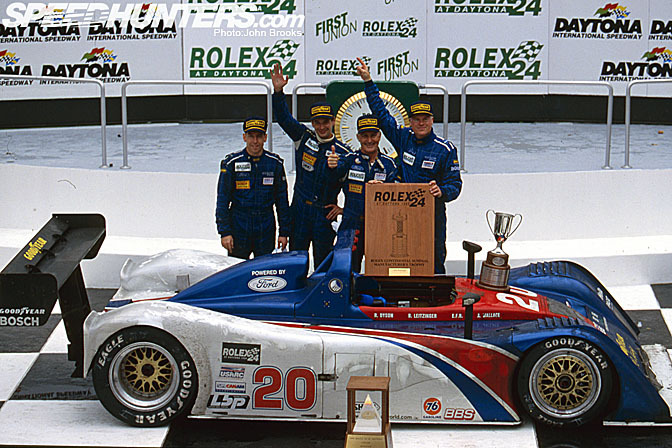
Fast forward to 1999 and the podium proceedings at Daytona were a much more orderly affair. Butch, Andy, EFR and Rob up to collect a Rolex apiece.
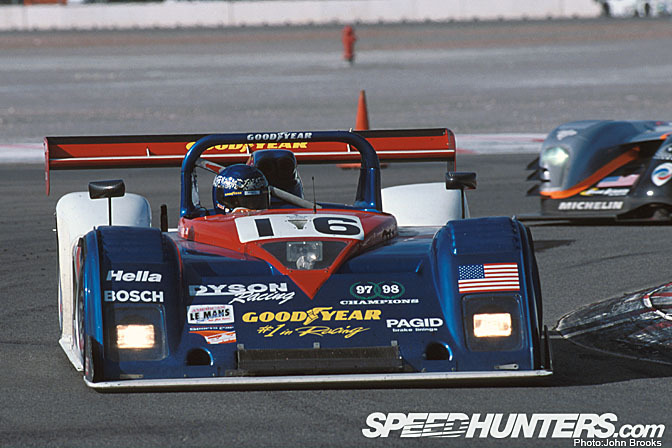
1999 was a good year for Elliot Forbes-Robinson who won the Driver's Title in the first American Le Mans Series, in of course the R&S MKlll.
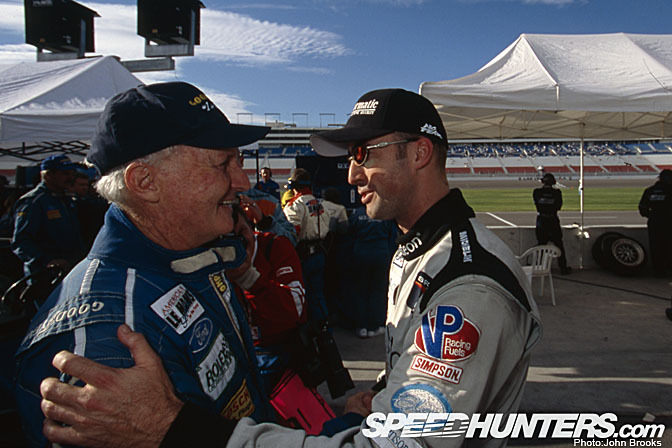
The title fight went down to the wire and the final round held at Las Vegas. Right until the last 30 minutes it looked as if the Panoz pair of David Brabham and Eric Bernard would win but then the Frenchman arrived in the pits with a cooked engine. EFR was Champion. As ever displaying grace under pressure as a true gentleman should, David Brabham congratulates EFR who could not quite believe it. Not bad for a bloke who was officially retired.
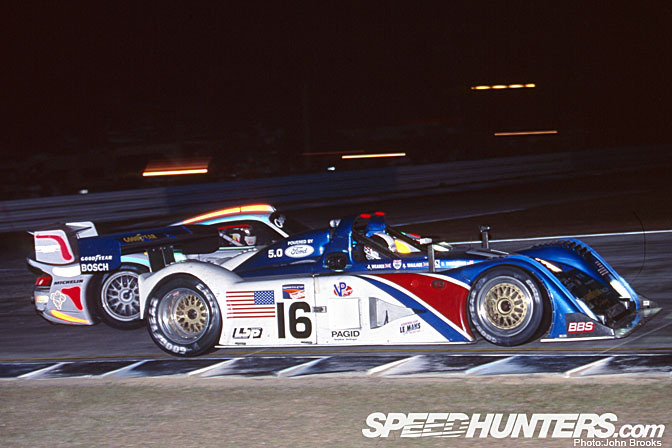
The opening round of the American Le Mans Series that year at Sebring had seen Dyson nearly beat the factory BMWs, pushing them all the way to record the closest finish in the history of the race up to that point. Weaver's charge in the last stint to finish just 17 seconds adrift of that year's eventual Le Mans winners is still spoken of in awed terms today. It is worth mentioning that the Dyson car beat the best of the Audis by three laps.
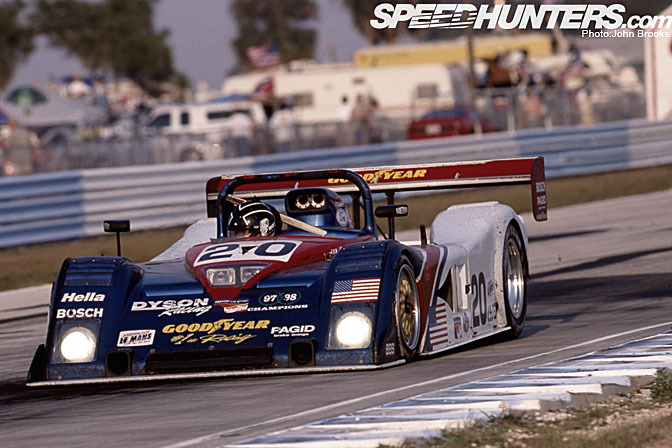
Final word on the Dyson Racing Riley & Scott MKlll era comes from Butch.
The 99 version was, perhaps his favourite Dyson racer of all. "It had tons of power and downforce. It was really fun to drive and you could extract everything from it, it was a real driver's car."
Part three later.
John Brooks






Happy New Year. Love this site. Keep it up in 2010!
hello!!
http://minkara.carview.co.jp/userid/471723/profile/
legends
Always loved that Racer "X" helmet.
Part III can't com esoon enough!!!!
love the memories these posts bring back.
that 1st pics mental, cant work out wats happened